
Late on December 21st or early on the 22nd, depending upon where you live on this earth, begins the celebration of the Winter Solstice. This is the shortest day of the year and the longest night. From this day until the first of January is a time for reflection and repose, as well as celebration. Although the Winter Solstice marks Midwinter, from now on the days become longer, barely noticeable at first, until we reach the Summer Solstice on June 21st, when we experience the opposite, the longest day and shortest night of the year.
Read about the 2010 solstice and its total lunar eclipse…
| Bird feeder–keeping our feathered friends fed. |
Literally translated from Latin solstice means “sun stands still.” During this longest night and shortest day, the sun is farthest from the Northern Hemisphere. Throughout history, people have recognized this day on the calendar as a turning point, when the sun reemerges and each day becomes a little longer. The Winter Solstice is considered the birthday of the unconquered sun and the moment of new beginnings.
Ancient rituals of the solstice were festive affairs. Often they were celebrated with days of feasting, colorful costumes, music and dancing. Huge bonfires were built and burned believing it would encourage the invisible sun to return to warm the cold earth. It is difficult for us to fathom the true depths of winter as our ancestors did, they constantly felt the need to preserve light and to ensure the return of the sun.
Nowadays, we light our homes both inside and out, sometimes simply with a candle in the window or a fire in the hearth or decoratively with strings of colored lights. However, the symbol of light is still the same as it has been since ancient times. During the darkest and coldest days when we spend more times indoors, we beckon the light hoping it will renew our spirits.
| Nutcrackers with juniper, pine, rosemary, pointsettia, chiles and pomegranate. |
Following the traditions of the ancients, we too bring the spirit of the outdoors inside during this time of year. Romans decorated for their Saturnalia with laurel and evergreens, which were a symbol of renewed fertility. Mistletoe, which was ritually harvested by the Druids, was a symbol of fertility and was reputed to contain medicinal as well as magical properties; it was given as a gift for good luck and friendship. Evergreens symbolizing earth’s renewal and the Tree of Life, decorated with light from the sun, moon, and stars were the precursors of today’s Christmas or Yule trees trimmed with ornaments and lights.
| Winter fire keeping holidays warm and bright. |
The Yule log is among the oldest traditions, a reminder of the importance of fire in the darkness of midwinter. It was usually lighted on Solstice eve from the remnants of last year’s wood; it was very important to pass the flame from one year into the next. Beliefs vary widely about what type of wood the log should be, if it burns for twelve hours it will bring good luck, if you keep it going until the new year the harvests for the next year will be bounteous, and many more. If you don’t have a fireplace or space for a bonfire, you can still choose a log to decorate or just have a simple ceremony of lighting a long-burning candle.
| Holiday table with pine and red tulips centerpiece. |
In many spiritual traditions around the world, the magical aura surrounding the winter solstice is celebrated in different ways. Pageants are held in Africa where Kwanzaa is celebrated as a time of regeneration, harvest festivals, and an observance of faith. Native Americans have their Sacred Circle of Stars, in Mexico they have the Night of the Radish, in Japan they have their Toji, Festival of the Broken Needles, while the Scandinavians celebrate friendship with gift-giving at the festival of Santa Lucia, bringer of light. The Inuit Eskimos have a simple ritual of a sun ceremony, lighting candles in the darkest night.
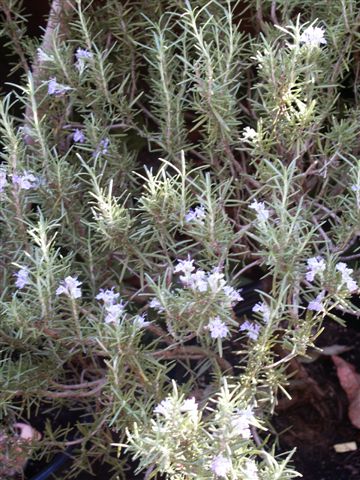 |
| Rosemary in greenhouse. |
At our house we celebrate the solstice with friends and family, joy and light, feasting and music. We try to light the house with lots of candles and turn out the electric lights, and of course we choose just the right Yule log to burn in the woodstove. The house is adorned with evergreens just as the ancients did; these are plants that stay green throughout the year and are easily gathered from our own backyards. We like to use an assortment for texture and color as well as fragrance. Of course, there’s holly, ivy, and mistletoe, and branches of pine, spruce, cedar or juniper, fir, hemlock, yew, and you may even be lucky enough to have boxwood or magnolia. Traditional herbs for the holidays are rosemary (I love the topiary shapes of the standards, wreathes, and conical trees), bay, thyme, and sage. For color, other than the red holly berries, white mistletoe berries, and blue juniper berries, the seasonal flowers are amaryllis, cyclamen, hellebores, Christmas cactus, and the hothouse grown poinsettias.
The foods that we choose are seasonal, fresh produce, grains, nuts, and dried fruits, which are easy to prepare. We like the idea of starting with a homemade hearth bread simply because bread is an ancient food and the staff of life, but also because of its inviting aroma to our guests when they arrive. Our main course is hearty, comfort food accompanied by some sort of greens dish. Of course, we like to end some sort of scrumptious dessert–homemade cookies and eggnog or sometimes a yule log. After such a meal, it’s time to adjourn from the table. Our friends pull out their musical instruments for after-dinner entertainment. Our home is filled with joyous sounds–laughter and singing– and we make merry well into the longest night of the year.
This year, our annual trek to our friends’ Robin and Anne’s house where we have been going for a bonfire for the past 10 years was cancelled due to a blizzard. We got over 18-inches of snow so the revelers had to stay home by the woodstove and eat their potluck dish. We kept the homefires burning, played holiday music, baked cookies, trimmed the tree and wrapped gifts. Here’s to the warming and brightening, and a jolly holiday season!
Here is today’s entry, Monday, December 21, from 365 TAO Daily Meditations by Deng Ming-Dao.
355
Winter
A homeless man dies in the gutter.
A tree cracks in the cold:
A shocking sound.
At the winter solstice, the day is shortest of all and night is longest. It can also be the time of bitter cold. The wind blows with a frigid ferocity, cutting all before it. Snow and ice become deadly. Those who are homeless die of exposure. Even the mightiest of trees can split from the drop in temperature. The sound of a tree snapping is a sudden slap.
The horrors, the tragedies that this nadir brings! Winter tortures the world with icy whips, and those who are weak are ground beneath its glacial heels. Sometimes, we dare not even lament those who die in the onslaught of winter, in fear that the tears will freeze upon our faces. But we see, and hear. Huddling closer to the fire, we vow to survive.
No matter how affected we are by misfortune, we must remember that this is the lowest turn of the wheel. Things cannot forever go downward. There are limits to everything– even the cold, and the darkness, and the wind, and the dying.
They call this the first day of winter, but actually it is the beginning of winter’s death. From this day on, we can look forward to warming and brightening.
Here is a list of holiday plants that we use during the holidays for decking the halls, cooking, and giving as gifts.
Herbs and Plants for the Holidays
| Herbs in the snow. |
1. American Mistletoe (Phoradendron serotinum)
2. Boxwood (Buxus sempervirens)
3. English Ivy (Hedera helix)
4. American Holly (Ilex opaca)
5. Poinsettia (Euphorbia pulcherrima)
6. Rosemary (Rosmarinus officinalis)
7. Thyme (Thymus vulgaris)
8. Sage (Salvia officinalis)
9. Bay (Laurus nobilis)
10. White Pine (Pinus strobus)
11. Fir (Abies concolor)
12. Chinese Fir (Cunninghamia lanceolata)
13. Spruce (Picea abies)
14. Hemlock (Tsuga candensis)
15. Yew (Taxus baccata)
16. Juniper (Juniperus virginiana, Juniperus communis)
17. Cedar (Cedrus deodara)
18. Cyclamen (Cyclamen persicum)
19. Rose (Rosa eglanteria, Rosa starina)
20. Christmas Cactus (Schlumbergera, Zygo cactus)
21. Magnolia (Magnolia grandiflora)


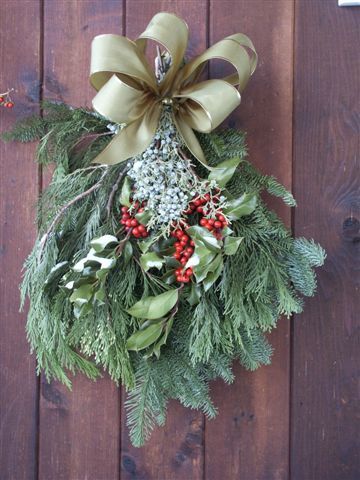
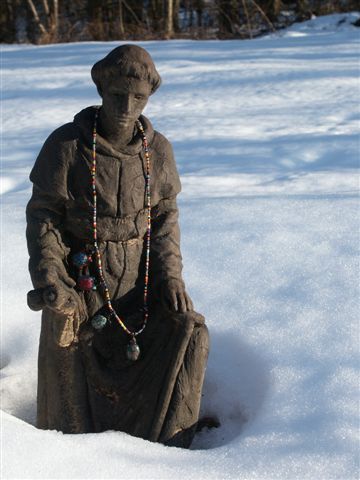
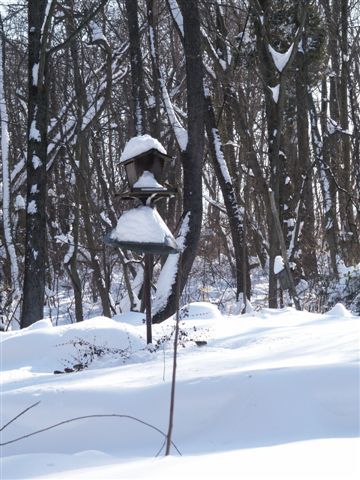
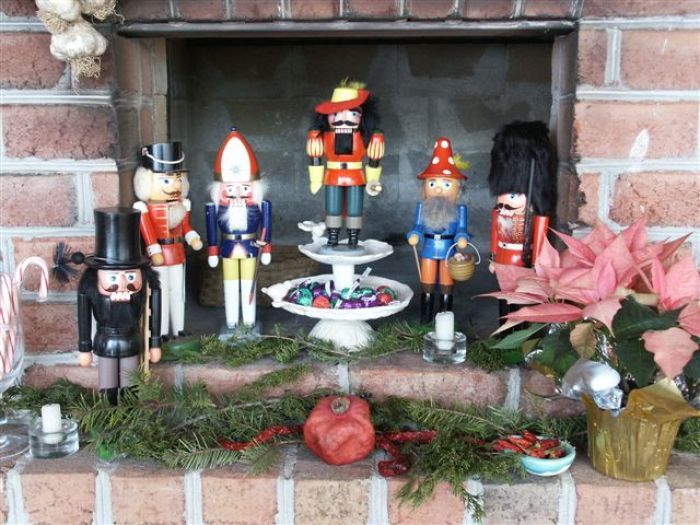
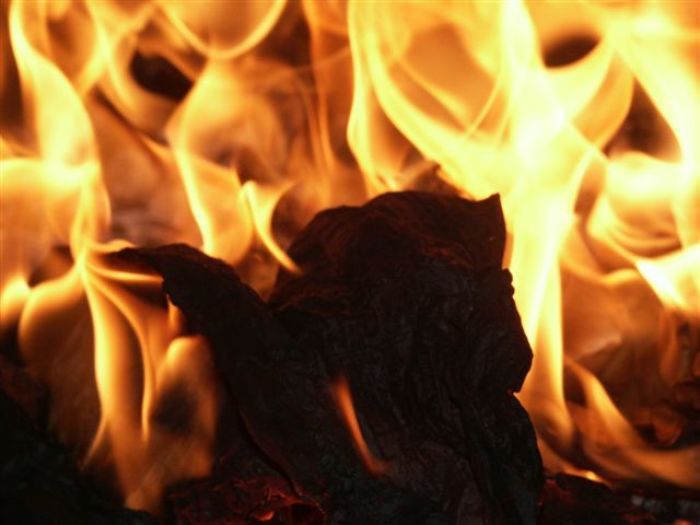

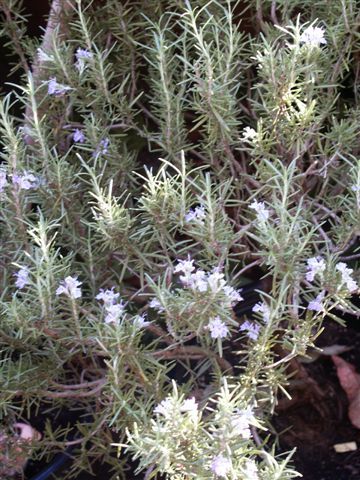
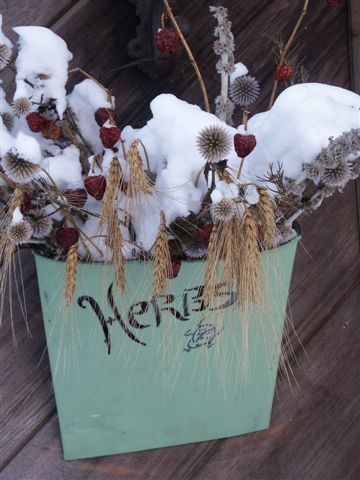
















Comments
Log in or create an account to post a comment.
Sign up Log in